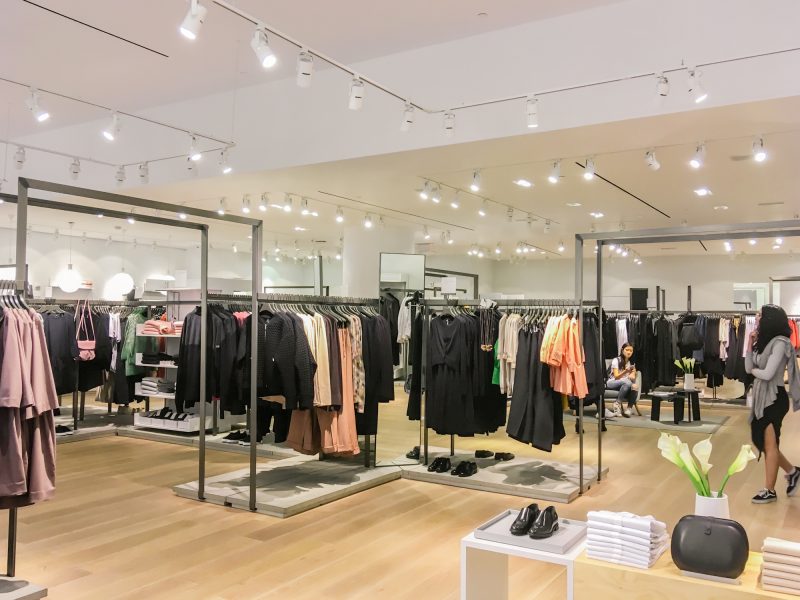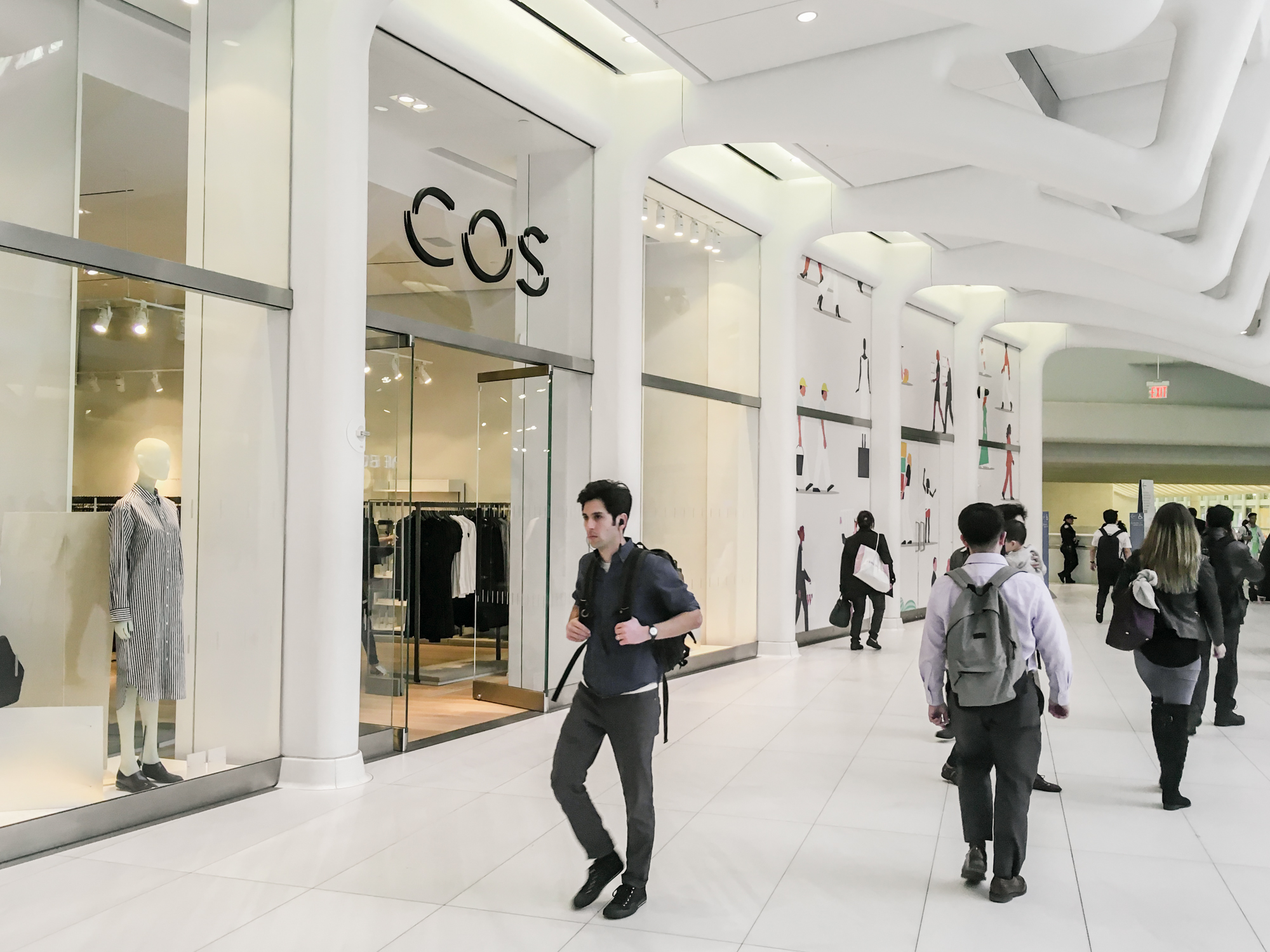- Though H&M’s business has been struggling, other H&M group brands have been doing well, according to the company’s CEO, Karl-Johan Persson.
- Cos, which launched in 2007, is focused on timeless, minimalist designs sold in a modern setting. Its success is helping to make up for H&M’s disappointing 2017.
- Its strategy differs from its sister brand H&M, which tries to follow trends and sells an abundance of styles in stores.
- We went to a Downtown Manhattan Cos store to see what shopping there was like.
H&M may be struggling, but its more high-end sister brand, Cos, is thriving, according to the company.
Short for Collection of Style, Cos is known for its high-quality, thoughtful, and timeless designs meant to “last beyond the season,” according to its website. While the philosophy is similar to that of H&M in terms of creating relatively affordable fashion, the brand has previously stated that “Cos prices start where H&M’s finish.”
Beyond a higher price point, where Cos differs from H&M is its focus on minimalist pieces that feel more high-end. The styles earned praise from the likes of Vogue and The New York Times when the store first landed in the US back in 2014.
To see what Cos is all about and why it's a bright spot for H&M, we went to a Downtown Manhattan location. This is what we found:
We immediately noticed a difference between Cos and H&M. Everything in the Cos store seemed very well-organized — similar clothes were paired together, with shoes and accessories that may match put in the same section.
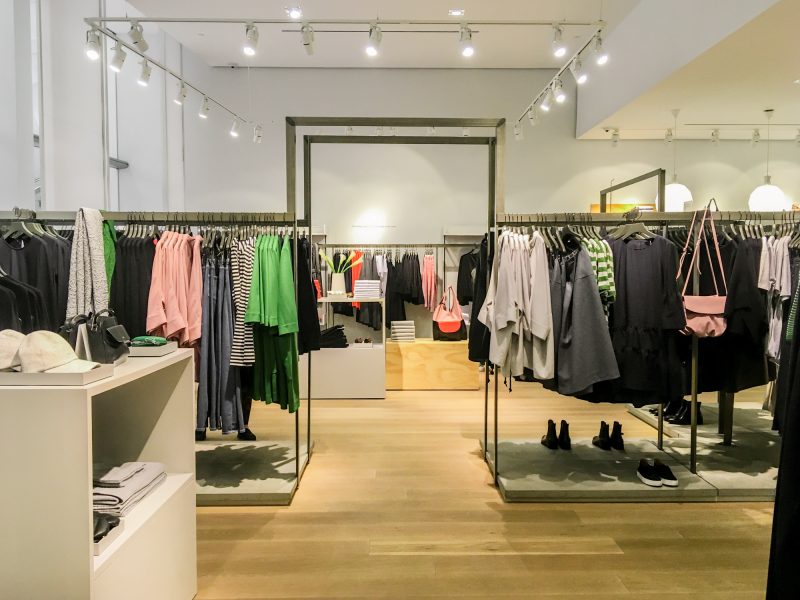
Pairing up similar color schemes with matching accessories made it feel easy to shop there at first ...
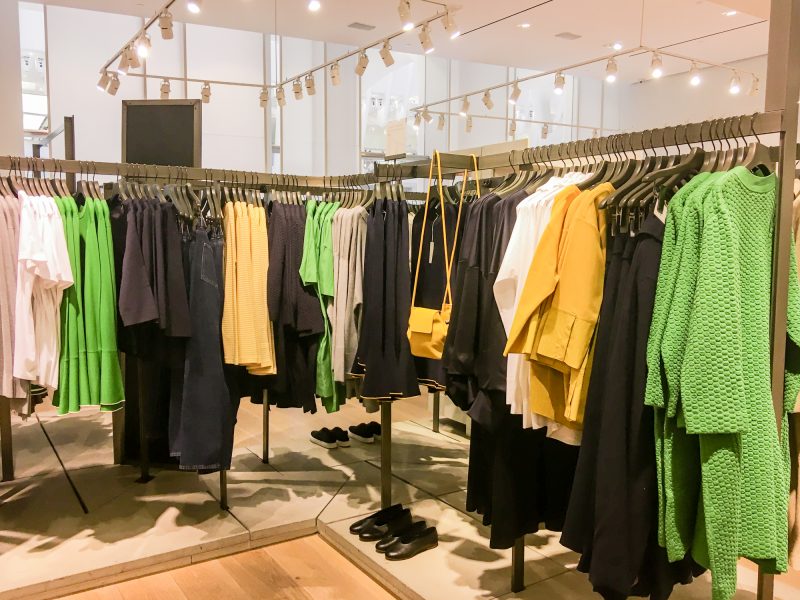
... but we soon noticed the formal and casual clothes were all mixed together, which made it harder to find certain styles. Though the website carries children's clothes, swimwear, and a very wide variety of styles, the in-store selection felt more limited.
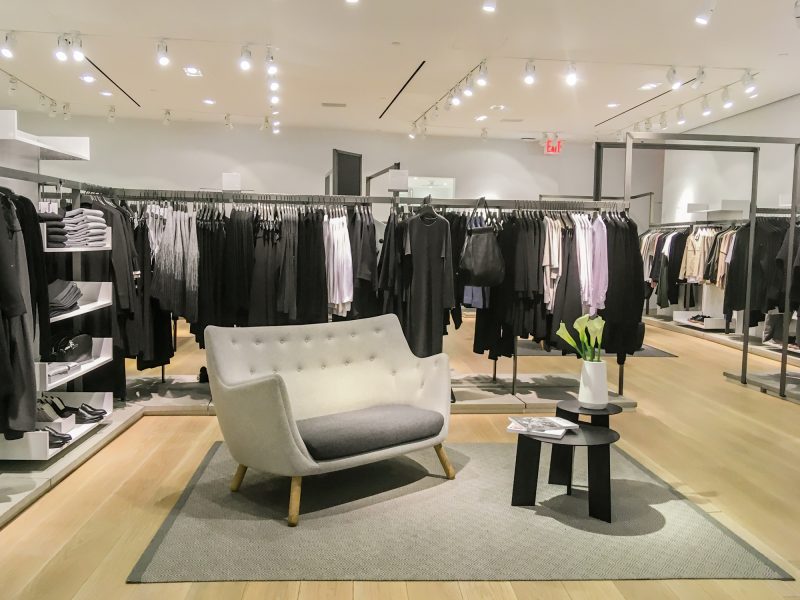
The men's section of the store was also pretty limited — a little less than half the size of the women's section. Online, the collections are more equal.
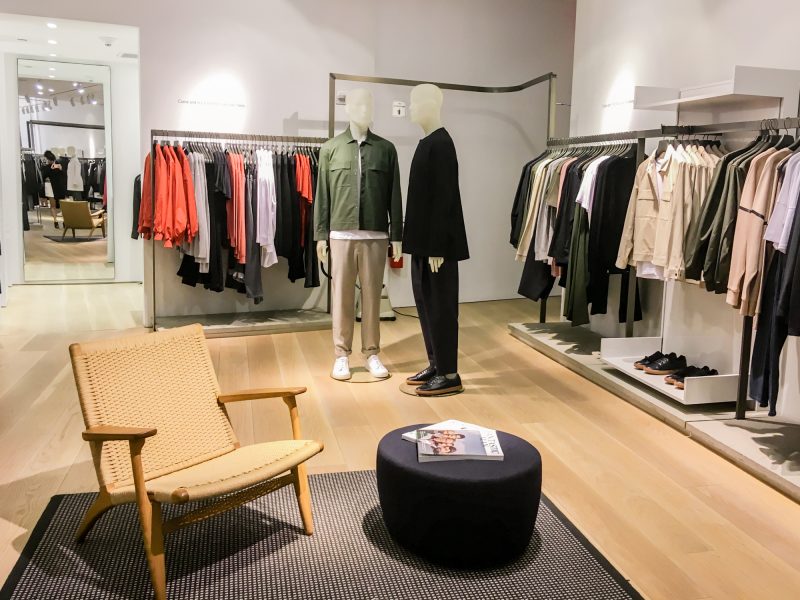
One of H&M's biggest issues is that its supply chain is slower than some of its competitors'. All over the Cos store were signs stating that new items were on their way, encouraging shoppers to come back for them.
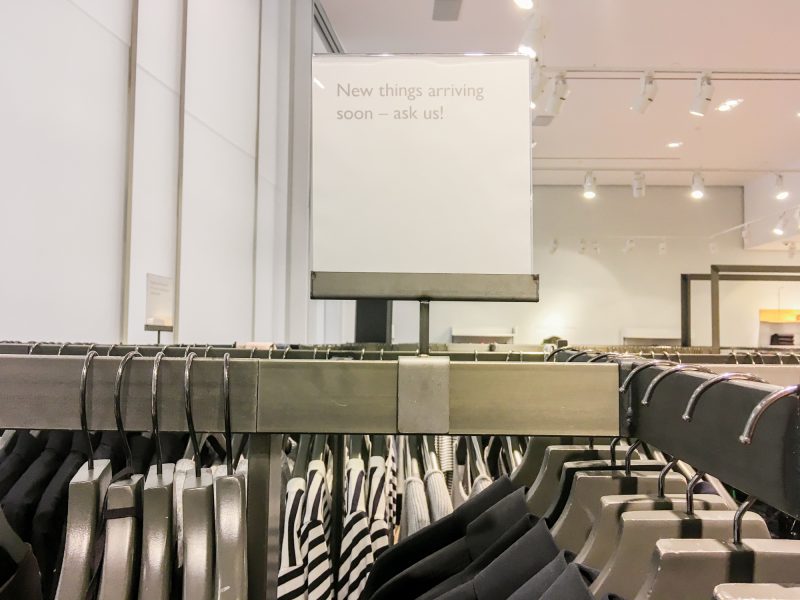
The displays around the store looked thoughtfully designed, and it made the store look and feel more high-end.
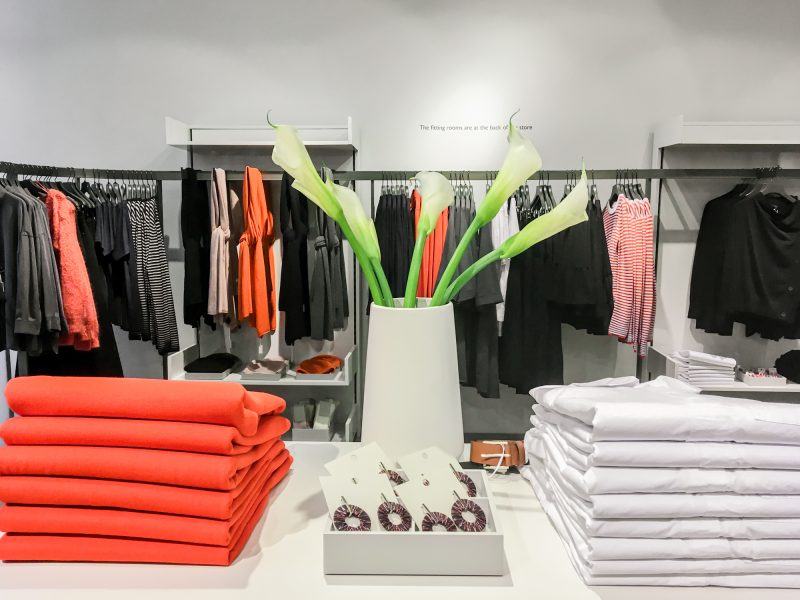
They were kept simple and neat, focusing on just one or two items. It was much easier to take in than the sometimes overwhelming H&M displays.
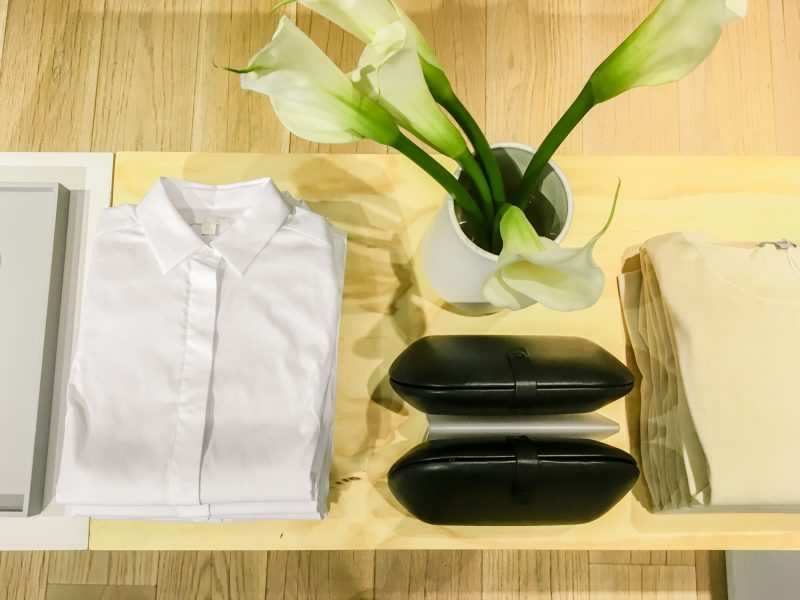
Likewise, the clothes themselves were all pretty simple, sticking mainly to a neutral color palette.
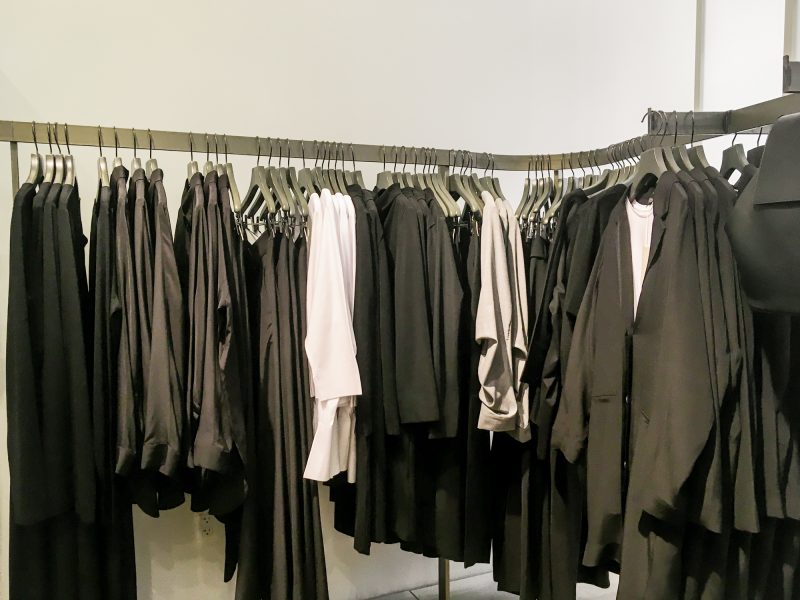
The store states on its website that it wants to create a "modern, welcoming space." It did feel modern, and it had a few spaces throughout the store where customers could sit and flip through an in-house look book.
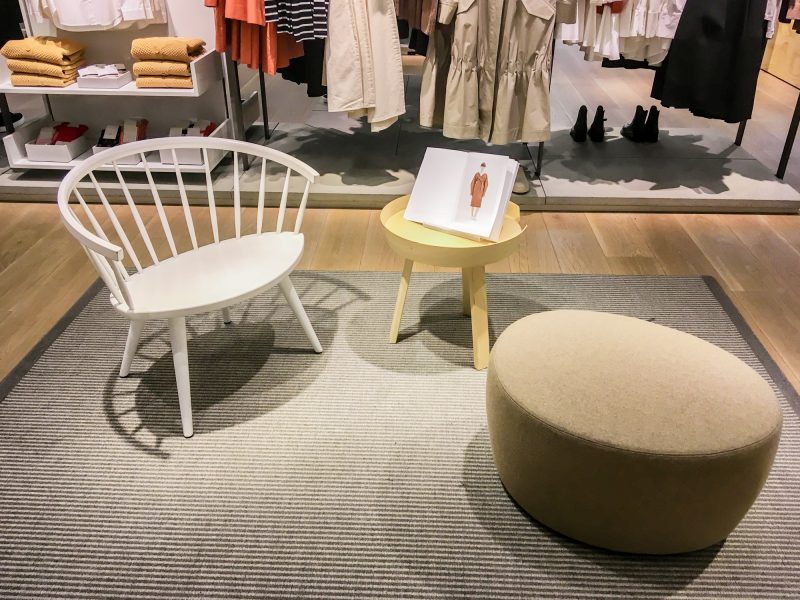
The prices were pretty high. This silk blazer and leather bag both went for around $225 — considerably more than similar items would be at H&M. Also unlike H&M, there were no clearance or sale sections in the store.
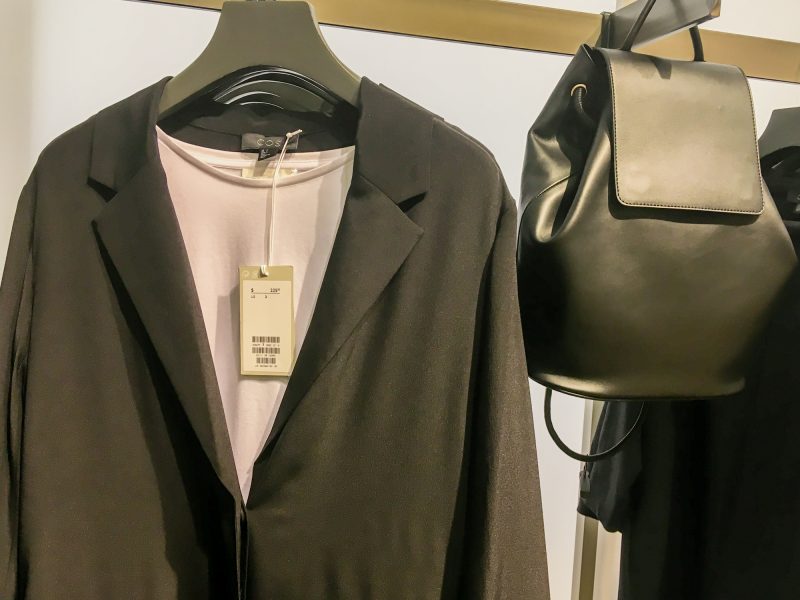
Accessories were surprisingly inexpensive compared to the price of the clothes, with nothing costing more than $35. The $20-and-under jewelry, which made up a majority of the selection, was on par with H&M prices.
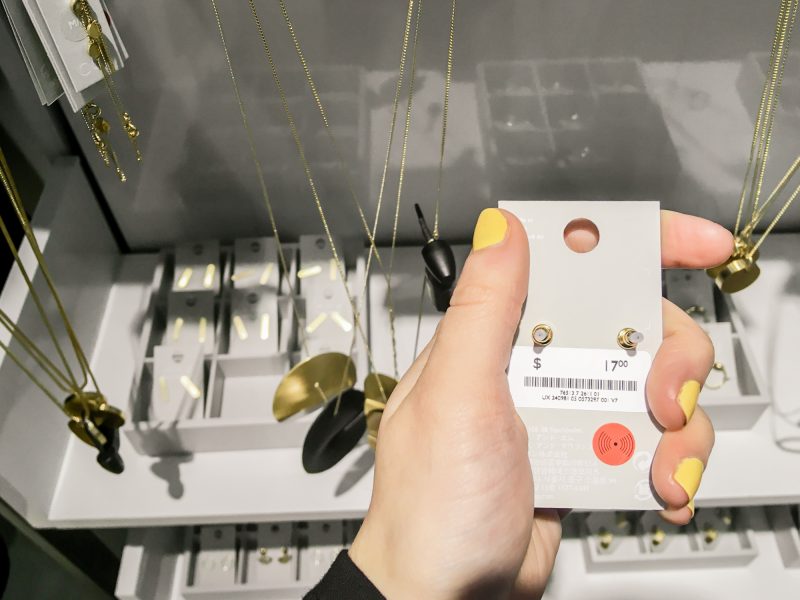
Some basics, like T-shirts, were also affordable at $20 each.
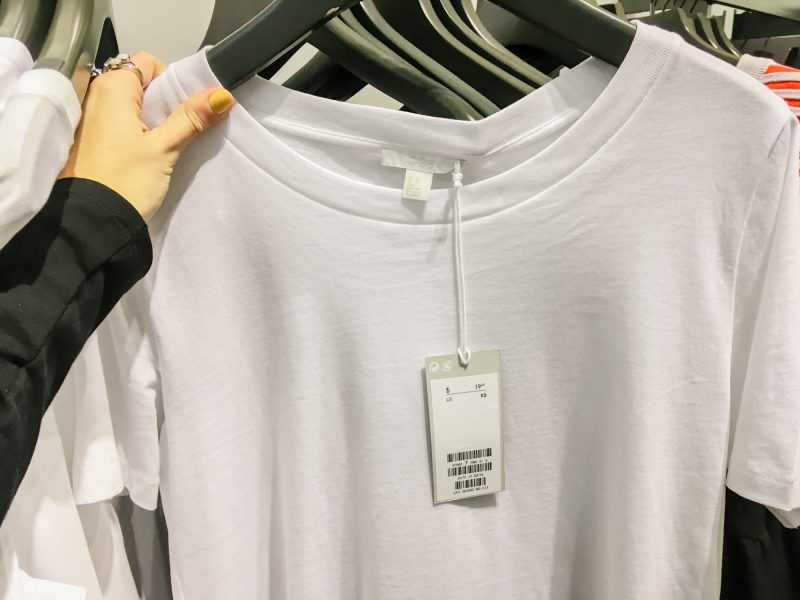
Other basics were more expensive, like this white collared shirt on display in the men's section, which cost $90.
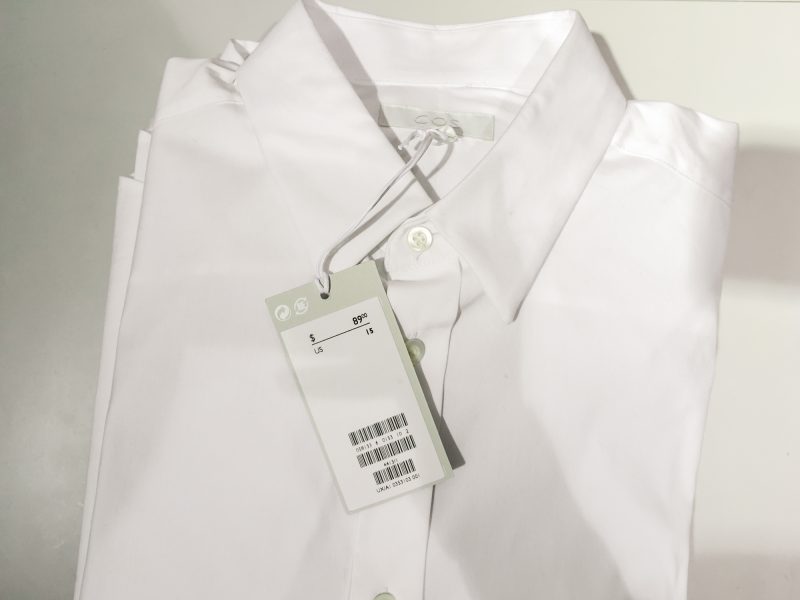
The fitting rooms were pretty much identical to those at H&M — bright and spacious. They were a lot cleaner, though. The racks with unwanted clothes were hidden out of sight, instead of being right where you walk in.
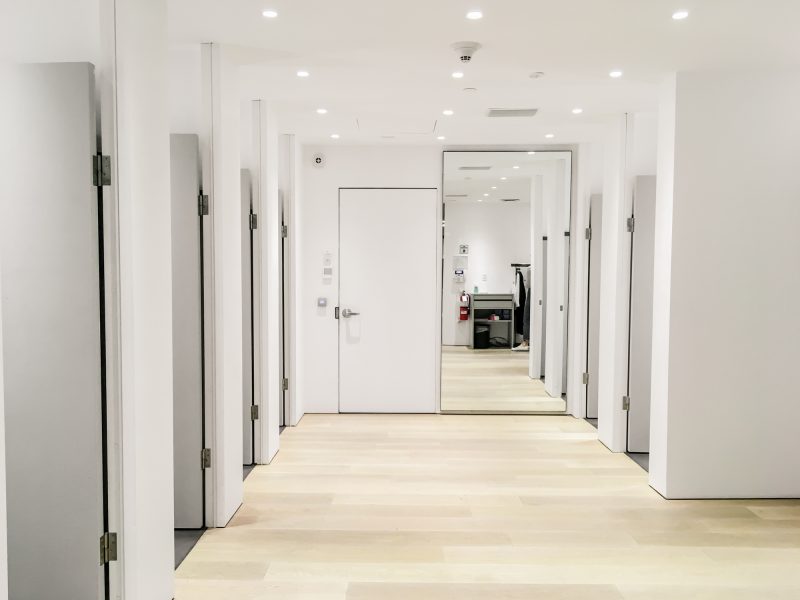
Overall, Cos was much less cluttered than H&M and seemed to have more of a defined style. The shopping experience was a little less overwhelming than H&M, and little details, like the lack of a sale section, made it feel like a more high-end store.
